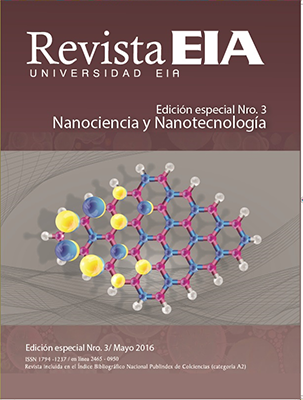APPLICATION: GRAPHENE NANOCOMPOSITE FOR IMPROVEMENT OF VACCINE TRANSPORTATION COLD CHAIN
APPLICATION: GRAPHENE NANOCOMPOSITE FOR IMPROVEMENT OF VACCINE TRANSPORTATION COLD CHAIN
Article Sidebar
How to Cite
Patiño Acevedo, J. M., Villar Vega, H. F., Isaza Escobar, R. A., & Matta López, S. A. (2016). APPLICATION: GRAPHENE NANOCOMPOSITE FOR IMPROVEMENT OF VACCINE TRANSPORTATION COLD CHAIN. Revista EIA / English Version, 12(2), 59–67. Retrieved from https://revista.eia.edu.co/index.php/Reveiaenglish/article/view/986
Published:
May 16, 2016
Section
Artículos
Licencia
![]()
Esta obra está bajo una Licencia Creative Commons Atribución-NoComercial-NoDerivativa 4.0 Internacional
Main Article Content
Jorge Mario Patiño Acevedo
Hernán Francisco Villar Vega
Ramiro Antonio Isaza Escobar
Sergio Alfredo Matta López
Abstract
Vaccines are biological products that must be kept between 2˚C and 8˚C. If not, they lose effectiveness to the point of total inactivity. Seeking to enhance the useful life of vaccines when they must be transported to remote locations, the use of a mobile monitored cooling system (SMRM, by its Spanish acronym) using a graphene-reinforced polymer nanocomposite has been proposed. This nanocomposite improves the cooling or heating speed of thermal, electric, and electronic devices. This improvement aims to ensure that SMRM transported vaccines have a reduced exposure to temperatures outside the specified range, allowing for greater efficiency than when they are transported using commercial systems. As a result of this study, a cooling rate of 1.54 (˚C/min) and energy consumption of 6.67 W/h were achieved, demonstrating a significant improvement, which, compared to commercial systems, yields a 200% higher cooling rate and 41% less energy consumption.
Article Details
Author Biographies
##ver##


 PDF
PDF
 FLIP
FLIP